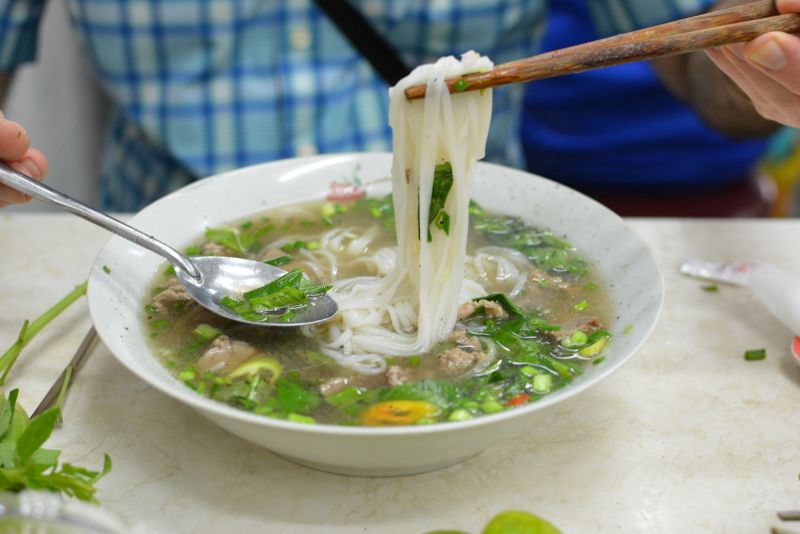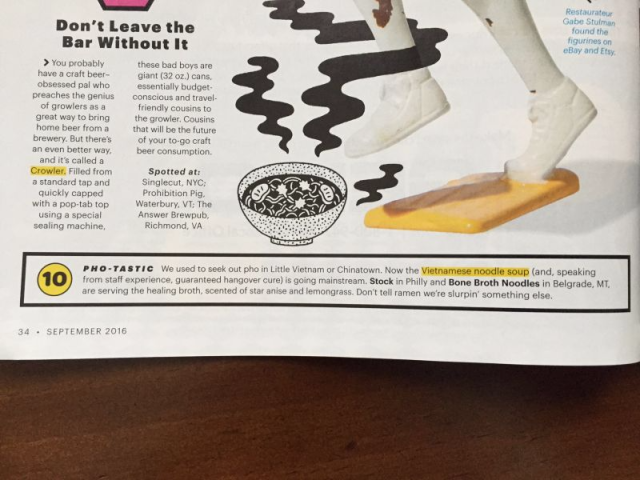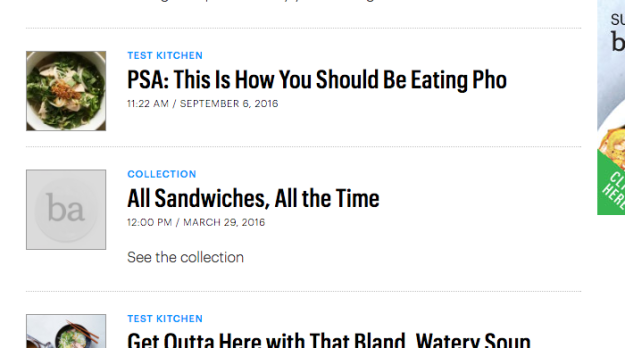A bowl of pho noodle soup comforts and delights, but it may also be controversial. As I wrote in “The History of Pho” feature in Lucky Peach magazine, pho has had an unusually rich history of being a means of protest and symbol of self-determination. That aspect of the pho experience has largely been confined to Vietnamese soil. This week, the pho broth boiled over at Bon Appetit magazine into a controversy that reflected many issues regarding food, race/ethnicity, and media.
Bon Appetit recently launched its “Best New Restaurants” issue, and when I read through it, I noted this:
How sweet, I thought. They’re giving a shout to pho, one of my favorite food groups. I did note a couple of odd things. What’s with “Little Vietnam”? Little Saigon is the common name for Vietnamese enclaves in the United States. Because Saigon is the former name of the capital of South Vietnam, “Little Saigon” is meant to defy the current Communist government in Vietnam. It’s a blow for freedom and democracy for Viet expats who sought refuge in America. I’ve yet to venture into a “Little Vietnam” and will now look out for them. (See “Cheater’s Guide to Little Saigon” in America.)
Names aside, pho does not include lemongrass. Perhaps Bon Appetit got confused with bun bo Hue noodle soup? Sometimes there is a lemongrass and chile sate condiment offered with pho –- but that is generally an outlier. Where did they go to eat pho? And, pho and ramen are not mutually exclusive.
I make room in my life for both. Asia is huge and I want to enjoy the full breadth and scope of the various cuisines. Asia is not monolithic. We don’t look and cook the same.
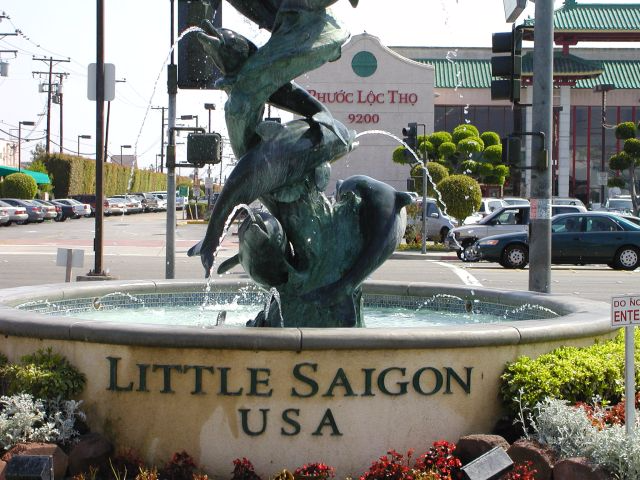
The mention in the magazine's print edition was flawed but forgivable. On balance, I was happy to see pho on Bon Appetit magazine’s radar, even if it was tucked into the bottom of the page.
Magazines can’t stop at their print editions these days. Online content is a great money generator. Yesterday, the magazine released and then removed a video featuring Tyler Akin of Stock, a Southeast Asian bistro in Philadelphia. Stock was included in Philadelphia Magazine’s 2015 picks of best pho spots, which included Viet-owned restaurants too. (A Philadelphia Inquirer story by Drew Lazor offers Akin’s backstory.) Ted on Twitter reported that Stock’s chicken pho is pretty good. That’s terrific to know. Pho welcomes everyone to the table and into the kitchen. Akin sounds like a good chef and person.
I didn't get to watch the video before it was removed. What seems to have stirred the pot and unfortunately made it over boil was the positioning of the video. Akin presented best-practices tips on how to eat pho. The original post indicates that Akin scoffs at adding hoisin and sriracha; he also presented a special technique for using chopsticks. The online article was framed as a PSA (Public Service Announcement) on how people should eat pho. The PSA acronym probably seemed like a clever click-baiting idea at the time of publishing, like “Attention all shoppers,” but it unfortunately struck a negative visceral chord.
Something went wrong between the copy in the Bon Appetit post and the video that really angered people. Social media lit up. The idea of a non-Asian, non-Viet person giving a tutorial on pho incensed viewers. People questioned why Akin should tell Asians how to eat pho. In reviewing the reactions (see the links below in this piece), the optics were bad.
The tweets and comments flew in, causing Bon Appetit to promptly take the video down and issue an apology.
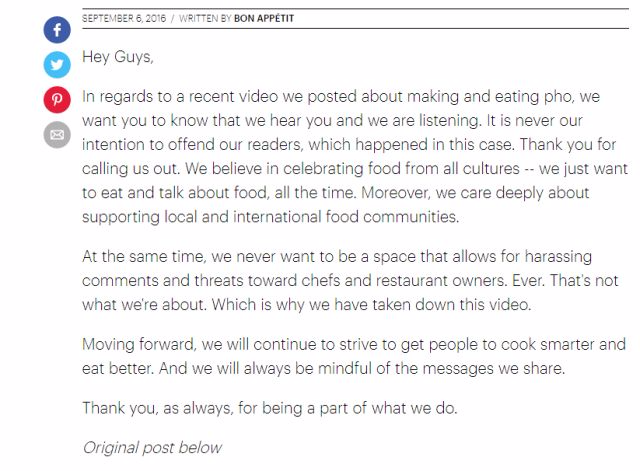
As I mentioned, I didn’t get to watch the video before it disappeared but there’s a summary of reactions at NextShark by Ryan General. Rachael Krishna posted a Buzzfeed rundown of the responses on Facebook, Twitter, and Yelp. Scholar Khanh Ho composed a op-ed on Huffington Post.
Mathew Rodriguez interviewed me for a story at Mic titled, “Bon Appetit video of White Chef Explaining How to Eat Pho is Peak Cuisine Columbusing" (columbusing signals cultural appropriation). Cosmopolitan magazine’s Helin Jung also called to chat about the situation for her article on the controversy.
People were offended, and not all of them were angry Asians. Not all of them were Vietnamese. Rather, they were people wanting greater depth and nuance.
Asian food has often been interpreted by others in the past, but as more Asian Americans are getting into food --- as customers, home cooks, chefs, writers, and editors, for example, they can and will voice their opinions. They are part of the multicultural mainstream. Their dollars and food deserve respect.
There are plenty of Vietnamese-American chefs and restaurateurs who can give insights on pho, in fluent English to boot! Bon Appetit should have reached out to them as well as Akin to compare and contrast.
Would the magazine have taken the same approach with an iconic French or Italian dish? Would it say that spaetlze is the new gnocchi?
Let me end on a Viet foodways note: When a person is carrying a hot bowl of pho out to the table, he/she may repeat, “Nước sôi, nước sôi” (literally, "boiling water, boiling water”). Who would have thought that pho would literally and figuratively be such a hot topic?
Feel free to share your pho-pinions!
[[UPDATE: After this post went live, Nick Zukin found the video and sent me the link via Twitter. Here it is, posted with a certain amount of anger in the subtitle (try to disregard it so you can watch with objectivity). The content is very mild and the dishes shown are not all pho so it's confusing. I wished Akin gave nods to Vietnam and/or Vietnamese people as the source for pho.]] [[9/9/2016: The video is no longer available on YouTube.]]
Related Links:
- "The History of Pho" at LuckyPeach.com
- For more, see the 9/15/16 post: "About that Pho Video Flap: The Fallout and Upshot"













